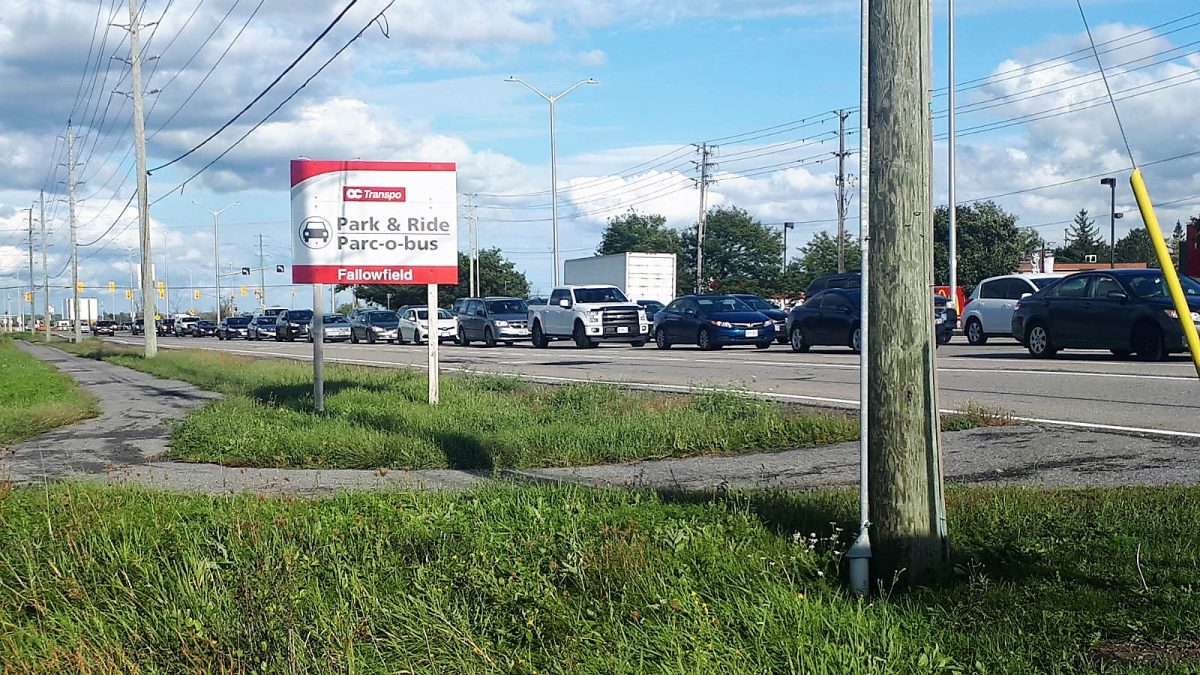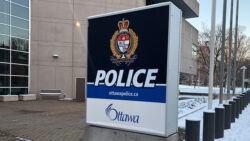Community groups in Ottawa say drivers are once again speeding through residential streets to avoid traffic, raising serious concerns about safety in residential neighbourhoods.
The issue appears to be most pressing in the suburbs. Data used by the city to track complaints reveals that wards on Ottawa’s outskirts have seen the highest number of speeding infractions this year.
This issue is most prevalent in Rideau-Jock ward. From January to July 2023, the ward had 12 infractions per 10,000 residents.
Fallowfield, a community in Rideau-Jock, epitomizes the complex problem faced by Ottawa’s residential areas.
North Steeple Hill Crescent is a residential road that sits between Fallowfield Road and Old Richmond Road, both classified as arterial. This classification means the 80 km/h speed limit cannot be further reduced.
Martin Clarke, the president of the Fallowfield Community Association, said commuters drive too fast when using North Steeple Hill Crescent as a detour to avoid traffic.
His community association has worked with city councillors, submitting requests for stop signs, speed bumps, and flex stakes.
“We try to tell residents to avoid even turning left onto Fallowfield road – there have been some bad accidents at that intersection,” Clarke said.
Thrill-seeking drivers also worry residents of Ottawa’s more rural wards.
“It could be a problem to the community's safety,” said Aidan Stringer, a third-year communications student at Carleton University whose parents live in Rideau-Jock.
“It’s concerning for sure. My parents and I have seen and heard some BMWs, for example, fly by our house,” said Stringer.
Speed limit signs are posted at each end of North Steeple Hill Crescent. However, Clarke said too many drivers ignore the signs.
Increased police presence in residential areas with speed concerns is the ideal solution.
“It's kind of hard to ask them to enforce it on a regular basis. We do have radar signs that indicate, [to] slow down which to some extent people will see and slow down a little bit, it's a little bit effective,” he said.
Though speed concerns are raised at a higher rate in more rural wards, specific areas of urban Ottawa also face speeding problems. Sandy Hill, in the inner-city Rideau-Vanier Ward, is one such community.
Louise Lapointe, president of Action Sandy Hill, highlighted congestion and rush-hour traffic as a primary cause for speeding in her community.
“What we notice a lot is people cutting through, either on east-west streets, or cutting up through north-south streets, to try to bypass traffic [on King Edward Avenue],” Lapointe said.

Lapointe said that Sandy Hill’s street layout makes it more ripe for speeding than other neighborhoods in Rideau-Vanier, which can explain why the ward still remains in the top 10 when it comes to the rate of speed concerns raised.
“The advantage that Vanier has is they have a lot more ‘less-continuous’ [streets],” Lapointe said. “You can go down Lafontaine [Avenue] or something, but it does not take long before you hit a wall.”
“But here, we have some nice long stretches directly connected to King Edward.”
In the past few years, the City of Ottawa has tried to curb speeding in Sandy Hill, such as introducing flex stakes in the middle of residential roads. Lapointe, however, believes the real issue is still not being tackled.
“Nobody’s really looking at alleviating the congestion,” Lapointe said. “They’re just hoping that active transportation will transfer the problem over, and I do not think that’s realistic.”
“A lot of people think that just closing streets to cars is going to fix this problem,” Lapointe added. “It won't, it’s just like squeezing a balloon.”
Lapointe also touched on the seasonality of speeding in her community.
“The only thing that’s positive in all of this is that winter is brutal, and in the winter we end up with these big snowbanks,” she said. “At least that minimizes the problem, and there isn’t as much speeding.”
As part of a pilot project that was approved in 2021, the city of Ottawa has been adding more speed cameras to combat speeding in residential areas.
According to the city’s website, the pilot program has caused a 200 per cent increase in compliance with the speed limit. Unfortunately, however, residential areas like Fallowfield and Sandy Hill that have recurring speeding issues are not eligible for speed cameras, based on the City of Ottawa’s criteria for community safety zones.



